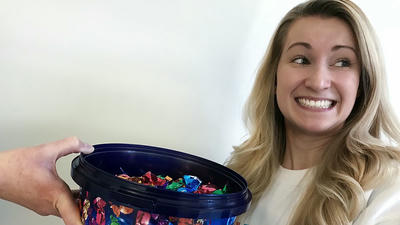
Sugar has become one of the most widely consumed and debated ingredients in modern diets. While it adds sweetness and improves the flavor of foods, excessive sugar consumption has been linked to numerous health issues, including obesity, type 2 diabetes, heart disease, and tooth decay. If you often find yourself reaching for sugary snacks or drinks, a sugar detox can be a beneficial strategy to reset your palate and improve your overall health.
Before diving into the plan, it is crucial to understand why sugar can be detrimental to your health.
There are two main types of sugar:

Before starting the one-week sugar detox plan, taking a few preparatory steps can help ease the transition and set you up for success.
Define your reasons for undertaking a sugar detox. Whether it's to lose weight, improve energy levels, or reduce cravings, having clear goals can motivate you throughout the week.
Fill your pantry and refrigerator with whole, unprocessed foods, such as fruits, vegetables, whole grains, legumes, nuts, and seeds. Avoid buying processed foods high in added sugars.
Read nutrition labels carefully and familiarize yourself with the many names for added sugars, including high fructose corn syrup, corn syrup, cane sugar, and agave nectar. This knowledge will help you make informed choices.
Prepare meals in advance to minimize the chances of reaching for sugary snacks or processed foods. Batch-cooking can save time and ensure you have healthy options readily available.
Breakfast: Overnight Oats
Lunch: Quinoa Salad
Dinner: Baked Salmon with Asparagus
Snack Options: Fresh fruit, raw nuts, or vegetable sticks with hummus.
Reflection: Journal your current sugar consumption patterns and feelings related to sugar cravings. Establish a mindset for the upcoming detox.
Breakfast: Smoothie
Lunch: Lentil Soup
Dinner: Stir-Fried Tofu with Vegetables
Snack Options: Greek yogurt with a sprinkle of cinnamon or slices of apple with almond butter.
Reflection: Note how reducing sugar has started to impact your energy levels and cravings.
Breakfast: Chia Pudding
Lunch: Healthy Wrap
Dinner: Roasted Veggie Bowl
Snack Options: Celery sticks with peanut butter or a small handful of mixed seeds.
Reflection: Consider how your cravings for sugar are evolving. Are they diminishing?
Breakfast: Scrambled Eggs with Spinach
Lunch: Bean and Corn Salad
Dinner: Quinoa and Vegetable Stuffed Peppers
Snack Options: Sliced bell peppers or carrots with guacamole.
Reflection: Keep track of whether you have experimented with any natural sweeteners, such as honey or maple syrup, or if you are learning to enjoy foods without added sugars.
Breakfast: Oatmeal with Nuts and Berries
Lunch: Vegetable Stir-fry with Brown Rice
Dinner: Grilled Chicken with Quinoa and Broccoli
Snack Options: A handful of almonds or fresh fruit.
Reflection: Reflect on the changes you've noticed during the detox. Think about any positive shifts in your mood and energy levels.
Breakfast: Smoothie Bowl
Lunch: Cauliflower Rice Stir-Fry
Dinner: Turkey & Veggie Meatballs
Snack Options: Edamame or a small salad.
Reflection: Journal about craving triggers, how to manage them effectively, and strategies to avoid falling back into old habits.
Breakfast: Protein Pancakes
Lunch: Mediterranean Chickpea Salad
Dinner: Baked Cod with Sweet Potato Wedges
Snack Options: Coconut yogurt or dark chocolate (70% cocoa or higher).
Reflection: Take a moment to celebrate your achievements throughout the week. Write down how you feel physically and emotionally after this detox. Your commitment to reducing sugar has cultivated mindfulness about your eating habits.

After completing the one-week sugar detox, it can be helpful to maintain a low-sugar lifestyle. Here are several strategies to keep in mind:
Even after the detox, continue checking labels for added sugars in packaged foods. Educating yourself on what's in your food will help you make informed choices.
Focusing on whole, minimally processed foods is the best way to stay low in sugar. Include plenty of fruits, vegetables, whole grains, and healthy fats in your meals.
While natural sweeteners like honey or maple syrup are healthier than refined sugars, they can still contain calories and affect blood sugar. Use them sparingly.
Pay attention to your hunger and fullness signals. Mindful eating encourages you to savor your meals and recognize emotional triggers for cravings.
Drinking enough water can help curb cravings. Sometimes, thirst is mistaken for hunger, leading to unnecessary snacking.
Look for healthy alternatives to your favorite sugary snacks. For example, if you crave sweets, try fruit with nut butter instead.
Continue to document how you feel about your eating habits. Tracking progress helps you stay accountable and committed to your goals.
Engage with friends, family, or communities about your sugar detox journey. Sharing experiences can provide support and encouragement.
Embarking on a sugar detox can be a transformative experience, enabling you to break free from the hold of sugar and gain greater control over your habits and health. With this comprehensive one-week sugar detox plan, you now have the tools and guidance needed to reset your palate, improve your overall health, and develop lasting habits to reduce sugar intake in the long term.
Remember that overcoming sugar cravings takes time and practice. Be patient with yourself and celebrate small victories along the way. The journey toward healthier eating habits is a continuous process that can lead to a more vibrant and fulfilling life.